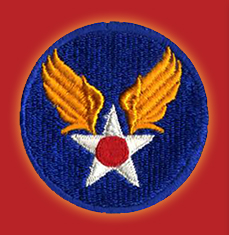104-Foot Rescue Boat, aka Type I, Design 235, Production Run of 158
The fifth and final group in the fleet, designed by Benjamin Dobson of Fairharbor, Massachusetts just before WWII, was the 104 foot rescue boat which was “comfortable and well-equipped” and could accommodate up to 23 patients in a fully stocked dispensary. However, the 104s had space for only 17 litters. During World War II they were frequently referred to as "Class I" boats. The 104s were able to stay at sea longer because both their longer length and their displacement hull enabled them to better handle rough seas. Its two main disadvantages were that it was very lightly armed and comparatively slow, with a cruise speed of 18 knots and a maximum speed of 21+ knots.
The original group of boats were powered by three Kermath V-12 engines producing 625 hp. each. I have not seen documentation to indicate whether the port engine turned counter clockwise when viewed from the stern, i.e. left handed. However, Kermath made both right and left handed Sea Raider engines and it is probable that the engine on the port side was left handed. The later 200 series were powered with three Hall-Scott engines of about 650 hp. each, the port engine being left handed. The 700 series boats were built toward the end of WWII and were originally designated as QS (Quick Supply) boats powered with 2 Packard engines of about 1500 hp. each, which improved the boat’s performance. All Packard 4M-2500 engines were right handed. Acceptance trial speeds with the Packards were generally in the 27 to 28 mph range. Only the Packard powered boats had twin rudders, all others had a single bronze rudder. The Packard powered boats had a 2:1 reduction gear after the treanmission to better match the power of the engine to the needs of the hull. One generally knowledgable source states that P-749 through P-756 were reworked and renumbered QS-49 through QS-56 boats. In addition, the aft portion of the hull was redesigned with hard chine for about 1/3 of its length to reduce her tendency to roll in even moderate seas and to add a cargo hold below deck along with deck gear to handle freight.
It appears that these boats were the best suited for operations around Alaska and the Aleutians and the preferred boat of those serving there. The hulls intended for Alaskan service were equipped with a "cold weather package" consisting of a hot water boiler with convectors (think a central radiator inside a forced air ductwork) for heating and an extra 500 gallon water storage tank, ice sheathing for the hull and insulation for the hull and possibly the pilot house. Not only did the insulation help keep the heat in the boat, it reduced the condensation that resulted when the warm moist air inside the boats came in contact with the cold exterior walls and hull, which was a serious problem on 85 ft. boats serving in Alaska and the Aleutian Islands. However, 104 ft. rescue boats also served in the South Pacific and the Caribbean as well. Boats for more temperate weather were equipped with electric heating systems.
Yards that built 104s included Casey Boat Builders in Fairhaven, MA; Ventnor Boat Works of Atlantic City, NJ; Dachel-Carter Shipbuilding, Benton Harbor, MI; Brownsville Boat of Brownsville, TX; Stephens Brothers of Stockton, CA.; but some sources maintain the best 104s for the 10th ERBS were built by Sagstad Shipyard, Seattle, WA. Pre-war, Sagstad had specialized in building fishing boats for the North Pacific. Boats bound for the 10th ERBS as well as others, went to either Barbee Marine Yards of Renton, or Olsen & Winge Marine, both near Seattle for final outfitting. Outfitting included, bedding, pots, pans, plates, silverware, etc. The boat shown above was Stephens Brothers built and has the framework for tropical canvas installed, but no canvas. At some point, I'm not sure but think probably after WW II, four were transferred under lend-lease, one to Cuba and three to the Dominican Republic.
The basic numbers for the 104, model A, are as follows: LOA 104'-9"; beam 19'-2 1/2"; draft of 5'-3"; displacement 83 long tons (about 92 short tons); fuel, 4000 gal. of gasoline; and 60 gallons of lube oil. Her fresh water tanks held 960 gallons. Not very fuel efficient, she could run for about 20 hours at full power, which gave her an operating range of about 550 miles at full power, consuming 200 gph. At normal cruising I'm sure she did considerably better but I have not found numbers to back that up. Running on just one Hall-Scott engine for maximum economy, they had a range of about 1,500 miles. Normally the 104s had a crew of 12 to 14, consisting of one Master; two Engineers; one First Mate; one Radio Opr.; one Medical Tech.; one Cook; one Navigator; one oiler; and five A/B Seamen. Thus far I have been able to document only a total of 93 boats having been built, not including 104' boats built as Quick Supply boats, although the "official" number of 158 boats may include them.
Two different sets of plan drawings are available in the 104 ft. album in the Photos & Missions section.

